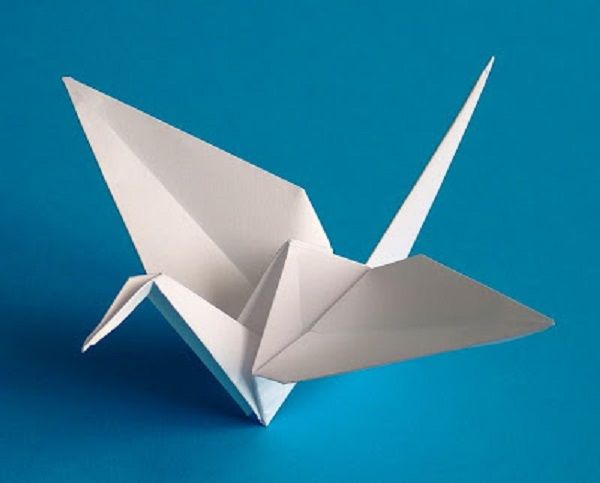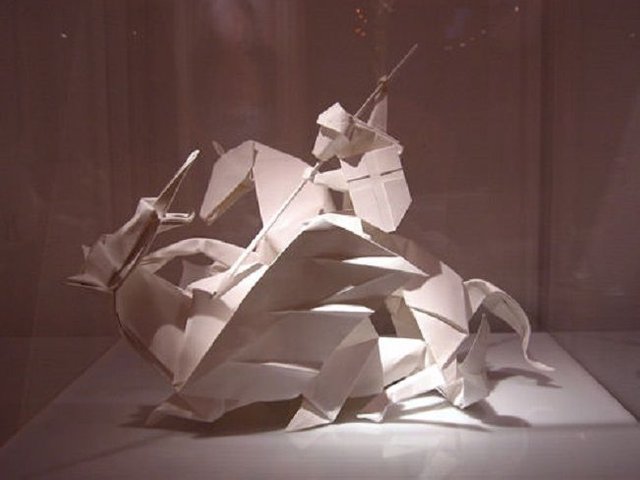Origami: the story of ancient art that does not stop inspiring

For centuries, different cultures with inspiration have approached, adopted and adapted paper art. The origins of many paper crafts, such as the Korean Hanji, can be traced to specific countries. Papier-mâché (crushed paper) with its French sound is actually a technique that originated in ancient China. Another popular practice that has left a special footprint throughout the world is origami - the art of bending paper. Although most commonly referred to as Japanese art, it is also rooted in China and Europe. So lets examine the unique history of origami to understand how different cultures have outlined the beautiful and so loved form of art.
What is origami?
Origami is the art of bending paper. Its name derives from the Japanese words Ori - Bend and Kami - Paper. The traditional origami is the folding of a square piece of paper (often with a colored side) into a sculpture - no cut, no gluing or even no delineation.
The history of origami
Creative minds from several countries have contributed to being the origins of what is today. The paper was created in China around 105 AD, and the folded paper - or zhezhi - as the Chinese call it - is likely to emerge shortly thereafter. About 900 AD yuanbao paper or real gold bits become an indispensable part of the traditional Chinese funeral. Created by carefully folding gold or yellow paper in the form of precious bullion, these ephemeral ornaments were created with the intention of throwing themselves into the fire at the end of the ceremony. Subsequently, folding of paper becomes a common practice. Though similar to Japanese origami, modern Chinese folding of paper is concentrated more on non-living objects such as boats and cans. The paper entered Japan in the 6th century. At that time the practice of its folding appeared as a ceremonial ritual in Shintoism. It was not until the historic Edo period (1603-1688) that origami became an activity for leisure and art. Similar to wood block printing - an art form that is also gaining popularity at that time - origami often features flowers, birds and other natural motifs. These themes also prevail in modern origami, which remains true to tradition in all paragraphs except one: initially, artists are allowed to strategically cut off pieces of paper. Today, however, true origami is sculpted only by folding - a rule the Japanese welcome from Europe.In Europe it is believed that the folding of paper has evolved from folding napkins - a practice that became popular in the 17th century. Like the Japanese origami, the folding of napkins uses different methods and techniques that lead to many abstract and figurative shapes. Ultimately, this interest in folding goes from school napkins to evening parties to schools, namely: in Friedrich Førbel's innovative curriculum. As a founder of kindergartens, Føebel includes several practices in his "games and activities institutions", including folding paper. This introduces the children to origami, which allows the art to flourish across the continent. In China, however, people are not very interested in this art. The most classical models are probably known and there, and perhaps originally derived from there, but certainly were later perfected in Japan, where origami was carried around the sixth century and where it really did reach its greatest rise.
Initially, it is limited within the upper classes. Before the epoch of the Emperor Edo (XVII-XIX century), origami (which at that time was actually called Origami or the orica, and later also the oremon) existed mainly in the form of various ceremonial, mainly wedding ornaments - interesting figures that few people they knew how to reproduce, and the keeping of the secret of their folding was a matter of honor. There are a number of different models for decorating traditional wedding saké bottles, the most common motif being butterflies (ocho-mecho), and for newlyweds - stylized human figurines. These butterflies are also the subject of the first sure written mention of origami - a little haiku from 1680 - "Rosei ga yume no choo wa orisue". Origami was popular and among the samurai caste - the samurai wore small amulets of paper that were thought to protect against misfortune and bring victory in the battles. These amulets were called noshi, and a wave of dried meat or fish was intertwined in origami.

The Legend of the 1000th Crane
According to the legend, who made a thousand paper cranes what his heart longs for, will become a reality. The crane is a symbol of peace because of a young girl named Sadako. She was irradiated by radiation from the explosion of the atomic bomb over Hiroshima. In 1945, dying of leukemia, a 12-year-old girl heard the legend and decided to make a thousand cranes so she could live. But when she saw the other children in the ward die, she knew she would not live, so she wished peace on earth and the end of suffering. Sadako died and was buried with a wreath of a thousand cranes as a tribute to her dream. Her friends made a granite statue in the Hiroshima Park of Peace: "A young girl with a stretched out hand and a crane." Sadako wrote haiku, which translates like this: I will write peace on your wings, and you will fly around the world so that the children do not have to die like this.
Nice paper art.
Does this bird wing also flutter?
I can make a flower. Nice art@godflesh
Thank you, this gave me insights to something i was always fascinated about. The usage as an part of a traditional funeral makes it even more mystique. Might start folding myself now
The history of art will keep remembering us of our history.....Thanks for sharing.
a very useful post, origami is a Japanese culture that penetrates to various countries in the world, this art is a form of creativity from the Japanese nation that was very developed during the Meiji reign, the symbol of origami used as a code in the government of japan at that time, which is interesting to learn.
Truly, I never heard the name of this art origami before your post. Mr @godflesh, you are superbly explained and educated us and its history is also interesting.
i always loved origami but never tried it myself :(
Origami looks easy but mastering it is hard as hell -_-
I once tried to do a paper pikachu, gave up half way 😂 There's only boats in my origami repertoire
Awesome! Nice post godflesh
Good job on the dashboard.
I love when people can organize data in a visually pleasing manner Keep it up ...
Check my article about. kurs sbd bebrapa menit yang lalu
My best post here. kurs sbd bebrapa menit yang lalu
I will follow you. godflesh